Consider the connections shown in (a) Find the capacitance between the points A and B. (b) find the charge on the three capacitors. (c ) Taking the potential at the point B to be zero, find the potential at the point D.
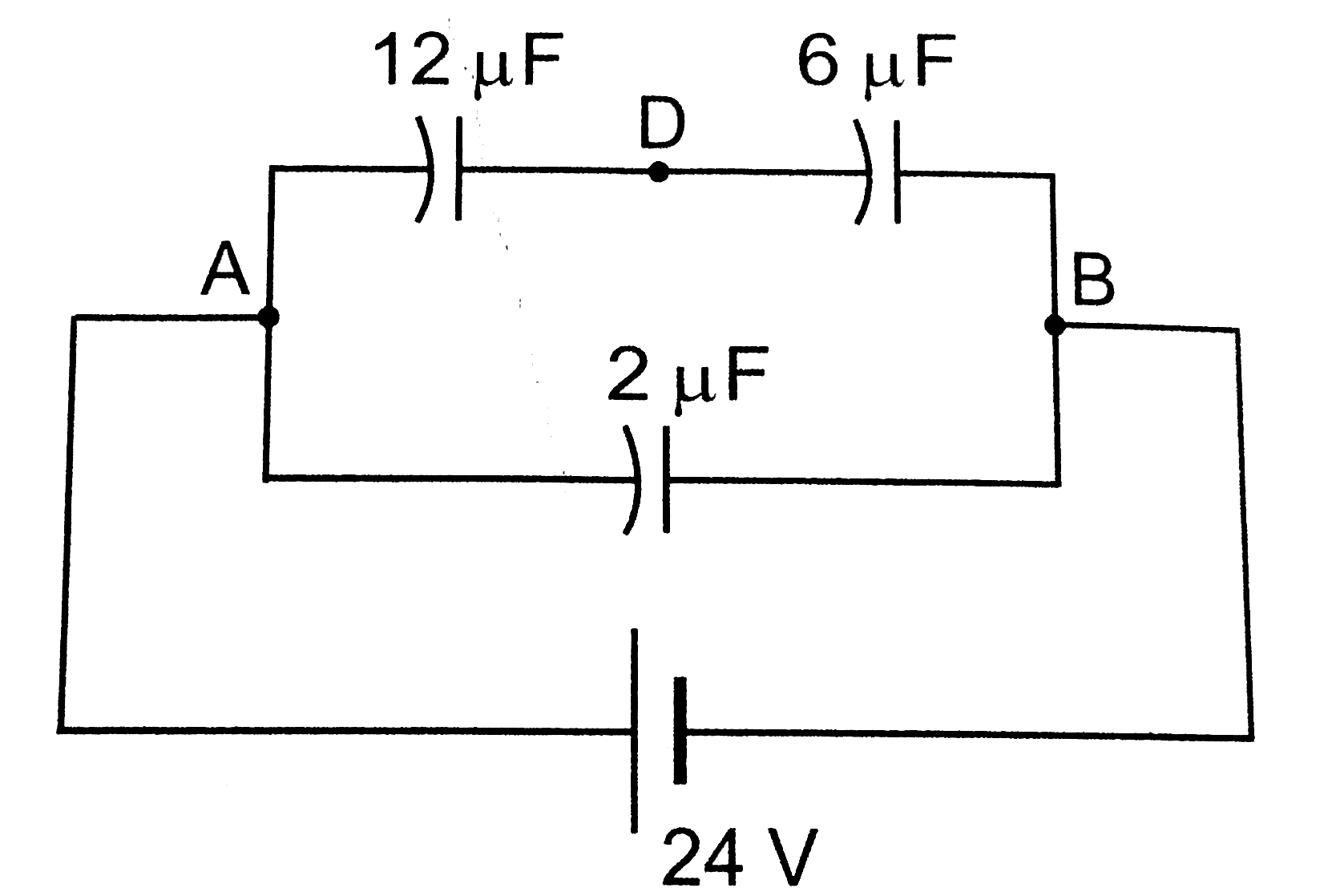 Solution in Tamil
Solution in Tamil
The <br>12 muF<br> and <br>6 muF<br> capacitors are joined in series. The equivalent of these two will have a capacitance given by <br>(1)/(C ) = (1)/(12 mu F) + (1)/(6 mu F)<br>, or, <br>C = 4 muF<br>. The combination of these two capacitors is joined in parallel with the <br>2mu F<br> capacitor. Thus, the equivalent capacitance between A and B is <br>4muF + 2muF = 6 muF<br>. (b) The charge supplied by the battery is <br>Q = CV =6muF X24V = 144muC<br>. The potential difference across the <br>2muF<br> capacitor is 24V . The charge on this capacitor is, therefore, <br>2muFX24V = 48muC<br>. The charge on the <br>12muF<br> and <br>6muF<br> capacitor is, therefore, <br>144muc - 48mu C= 96muC<br>. (c ) The potential difference across the <br>6 muF <br> capacitor is (96 muC)/(6 muF) = 16V<br>. As the potential at the point B is taken to be zero, the potential at the point D is 16 V.
Topper's Solved these Questions
- BOOK - HC VERMACHAPTER - CAPACITORSEXERCISE - short answer7videos
CAPACITORS
- BOOK - HC VERMACHAPTER - CAPACITORSEXERCISE - Objective 112videos
CAPACITORS
- BOOK - HC VERMACHAPTER - CAPACITORSEXERCISE - Exercise68videos
CAPACITORS
- BOOK - HC VERMACHAPTER - BOHR'S MODEL AND PHYSICS OF THE ATOMEXERCISE - Exercises46videos
BOHR'S MODEL AND PHYSICS OF THE ATOM
- BOOK - HC VERMACHAPTER - DISPERSION AND SPECTRAEXERCISE - Exercises11videos
DISPERSION AND SPECTRA
Similar Questions
Suppose a charge +Q1 is given to the positive plates and a charge −Q2 to the negative plate of a capacitor. What is the "charge on the capacitor"?
05:58View SolutionA capacitor of capacitance C is charged to a potential V. The flux of the electric field through a closed surface enclosing the capacitor is
09:23View SolutionWhen 1.0×1012electrons are transferred from one conductor to another, a potential difference of 10V . What will be capacitance of the two -conductor system .
06:01View SolutionThe bohr radius is given by a0=ε0h2πme2 verify that the RHS has dimesions of length
21:53View SolutionA flint glass prism and a crown glass prism are to be combined in such a way that the deviation of the mean ray is zero. The refractive index of flint and crown glasses for the mean ray are 1.620 and 1.518 respectively. If the refracting angle of the flint prism is 6.0∘, what would be the refracting angle of the crown prism ?
02:53View SolutionTake the potential of the point B in figure to be zero . (a) Find the potentials at the points C and D ,(b)If a capacitor is connected between C and D , what charge will appear on the capacitor ?
 04:38View Solution
04:38View SolutionIn the diagram shown find the potential difference between the points A and B and between the points B and C in the steady state.
07:10View SolutionThe resistance and batteries are connected as shown in. The potentials at points B,C,D, and E are assigned as shown. Find the potential at point A.
05:57View Solution(a) Taking the potential at the point B to be zero, find the potential of point D.
(b) Find VA−VB. Under what condition is it equal to zero.
(c) Consider the situation as shown in diagram. How much charge will flow through cell if the switch S is closed?
(d) In the circuit shown in the figure, calculate
(i) Potential difference between the points X and Y.
(ii) Potential of the point X when switch S is closed.
(iii) Charge flown through the switch when it was closed.
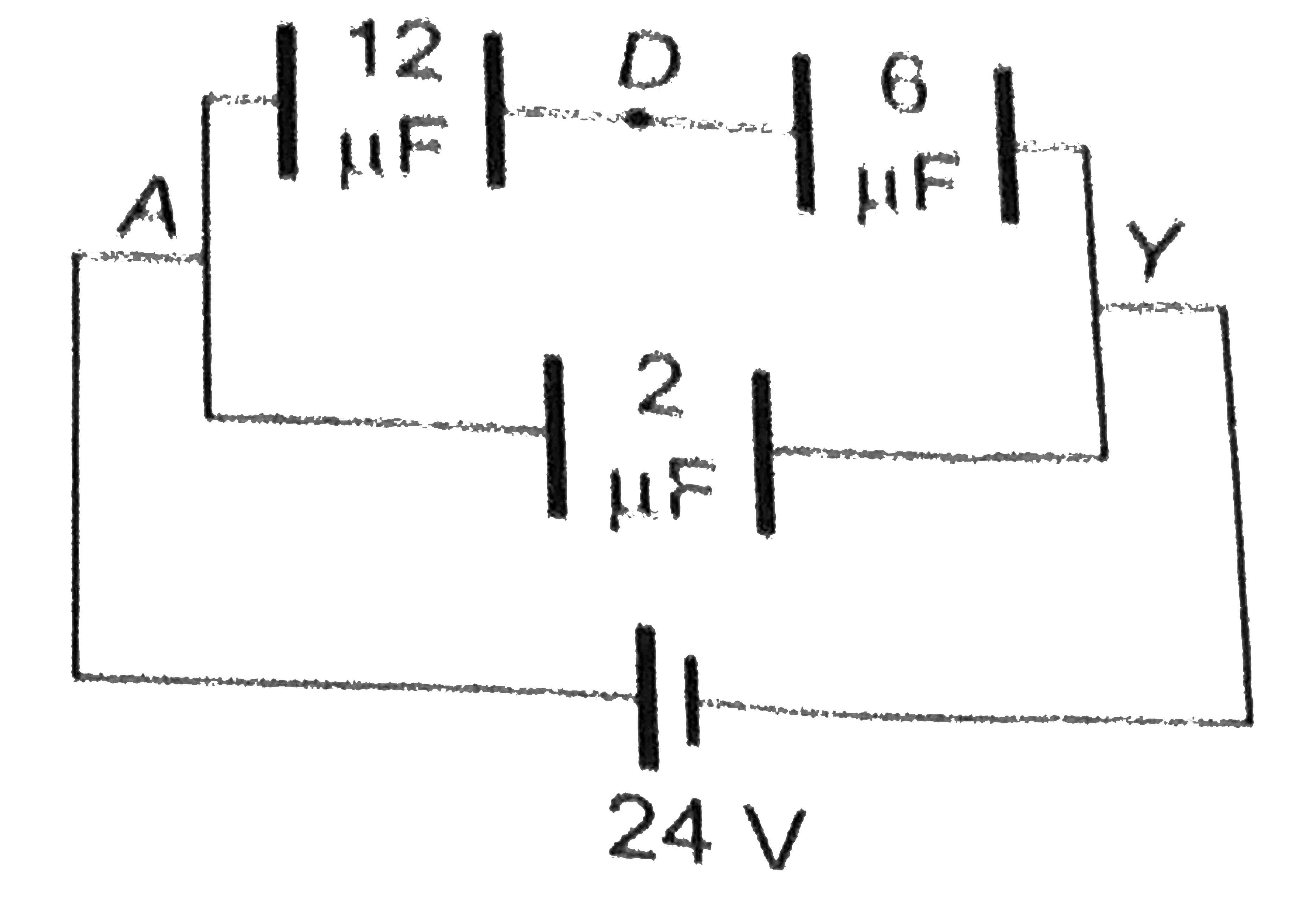
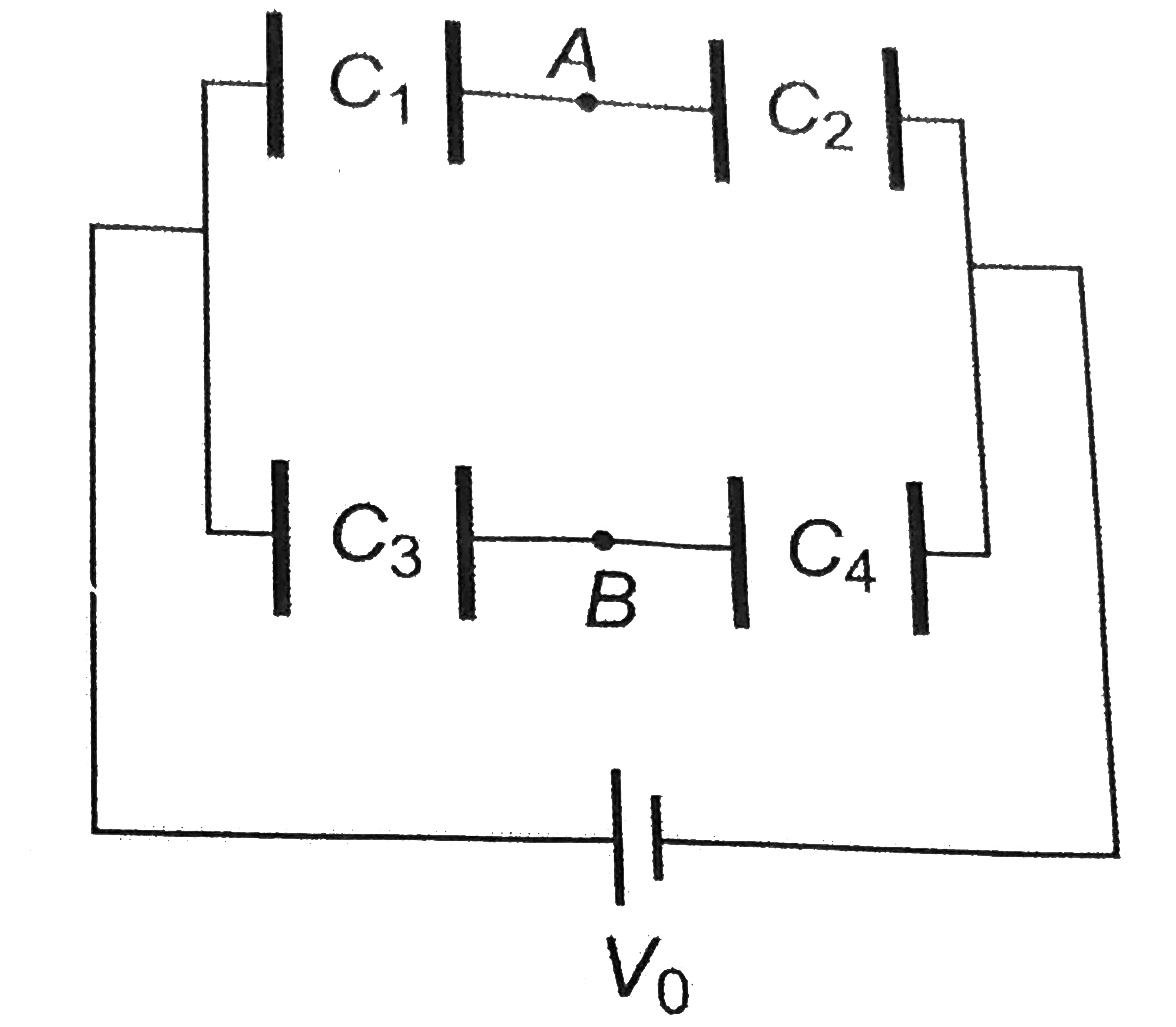

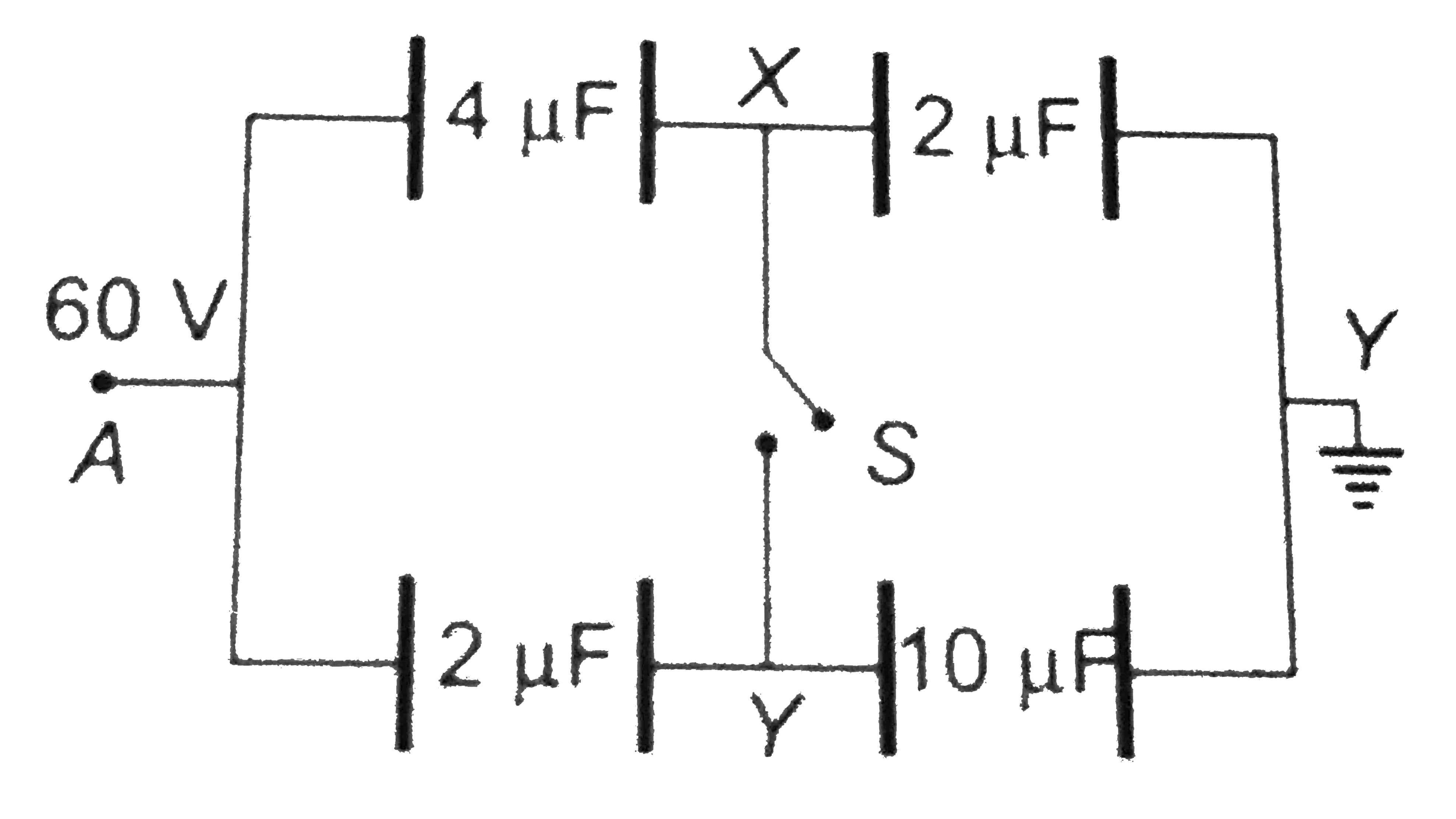 12:49View Solution
12:49View SolutionIn the circuit shown in the figure all the capacitors have capacitance C.
(a) Find the charge on capacitors marked as 1 and 2 when a battery of emf V is connected across points A and B.
(b) Find the equivalent capacitance across points C and D marked in the Figure.
(c) Find the equivalent capacitance across points E and G.
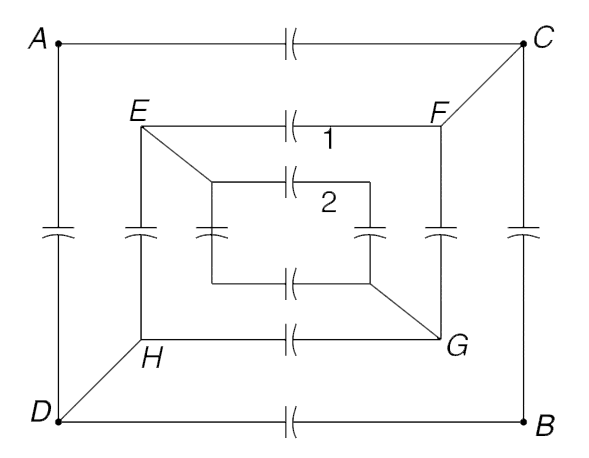 07:26View Solution
07:26View SolutionFind the potential difference between the points A and B (VA−VB) as shown in figure. (Initially all the capacitors are uncharged)
 03:08View Solution
03:08View SolutionTake the potential of the point B as shown in the figure to be 100 V.
(a) Find the potentials at the point c and D.
(b) If an uncharged capacitor is connected between C and D, then find the amount of charge that will appear on this capacitor
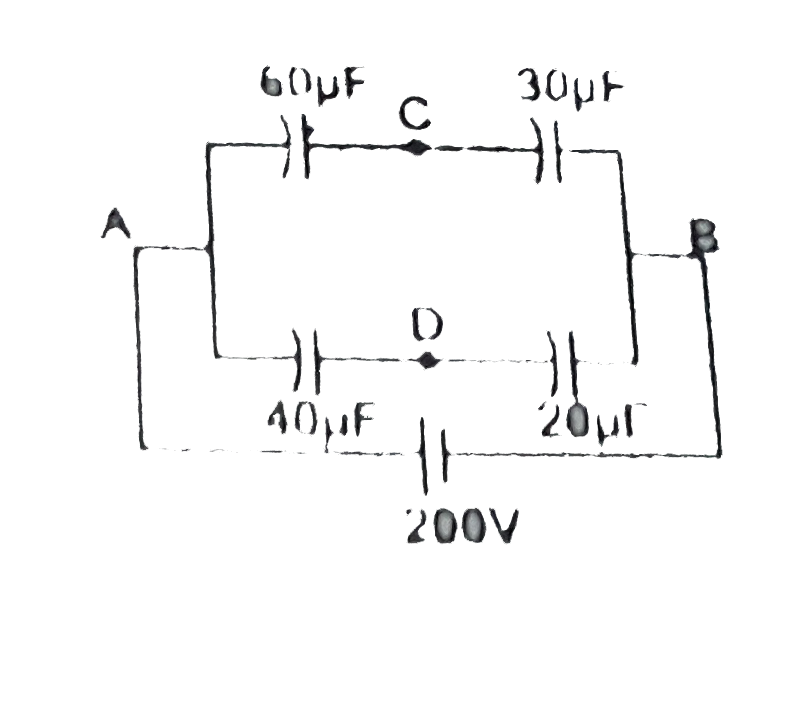 08:06View Solution
08:06View Solution(A) सामान धारिता के चार संधारित्र श्रेणीक्रम में 10 वोल्ट की बैटरी से जुड़े हैं। बीच का बिंदु c पृथ्वी से जुड़ा हैं (चित्र) बिंदु a तथा c के विभव ज्ञात कीजिये।
(B) यदि बिंदु c के स्थान पर बिंदु b पृथ्वी से जुड़ा हों तो बिंदु a व c के विभव क्या होंगे?
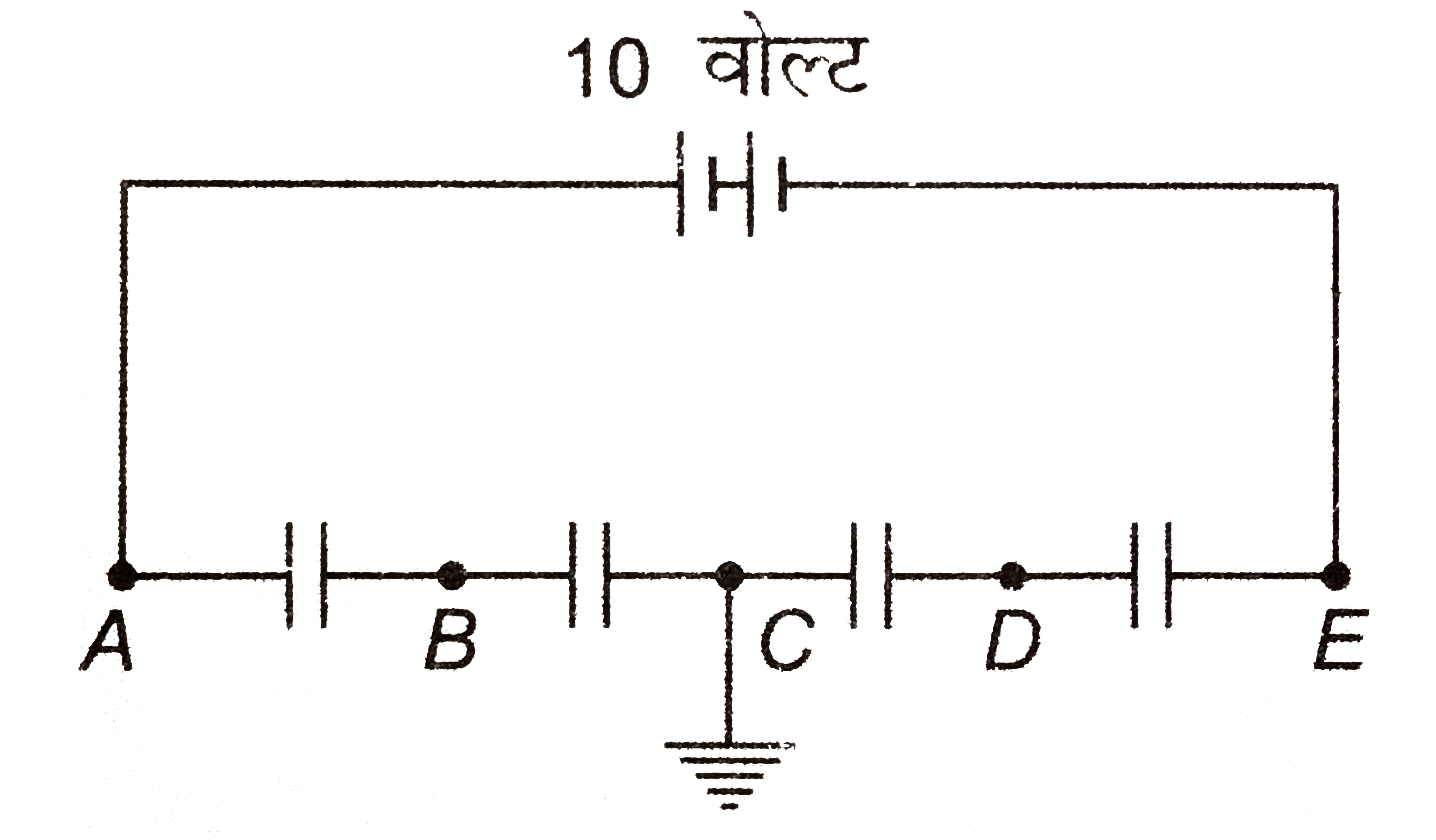 04:00View Solution
04:00View Solutionचित्र 1.4-1 में प्रदर्शित संधारित्रों के संयोजन के लिए a तथा b के बीच तुल्य धारिता ज्ञात करे। यदि a एवं b के बीच 300 V का वोल्टेज संभरण जुड़ा हो, तो प्रत्येक संधारित्र पर आवेश तथा प्लेटो के बीच विभवांतर ज्ञात करे।
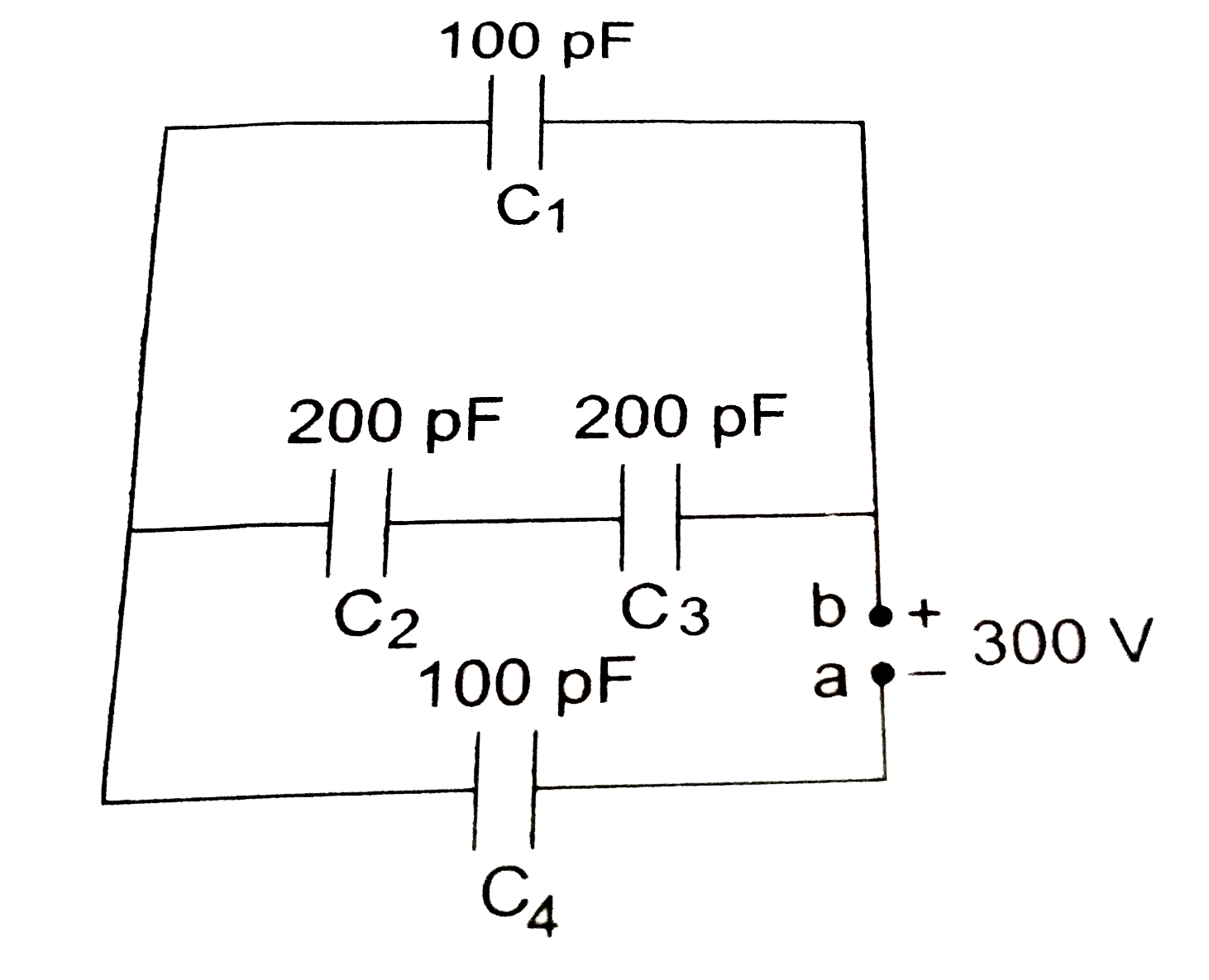 View Solution
View SolutionC धारिता वाले अनेक सधारित्र चित्र में दर्शाये अनुसार अनंत संख्या में संयोजित है | बिंदु A और B के मध्य कुल धारिता का मान ज्ञात कीजिये |
 06:55View Solution
06:55View Solution10,12 व 24μF के तीन संधारित्र चित्र के अनुसार जोड़े गये हैं | A व B बिन्दुओं के मध्य धारिता ज्ञात करो ।
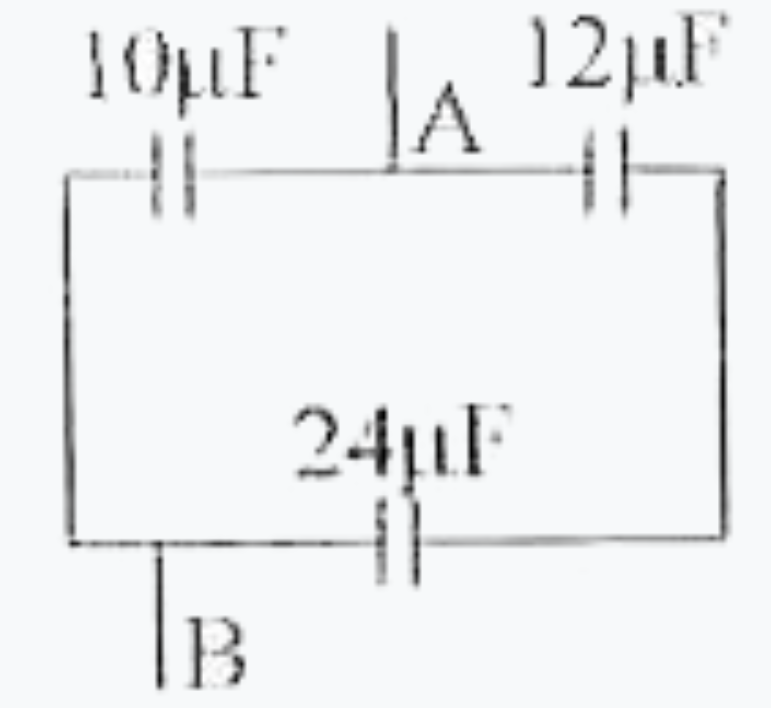 04:56View Solution
04:56View Solution

